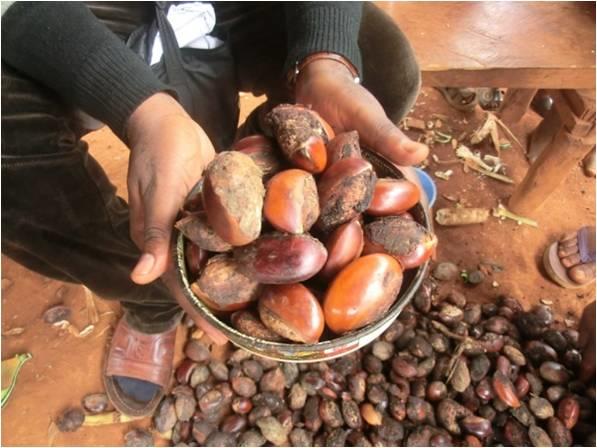Sustainable food systems include food from forests

Participants of Nutritious Foods from Forests, a side event of the 40th gathering of the Committee on World Food Security, said increased food security depends on the policymakers' recognition of forest foods as part of the equation.
Globally, it is estimated that billions of people depend on forests and trees. This is true for many people living in developing countries, for whom forests are an essential part of a sustainable food system.
Action is needed to better manage forests and their genetic resources to ensure long-term availability of these food resources to rural people who depend on them for their nutrition and livelihoods. Such action requires heightened awareness of the important contribution of forests and trees to food security and nutrition, especially among policymakers.
“People normally associate forests with trees and the wood they provide, but most people don’t see a direct link to food security,” said Eva Muller, Director of the Food and Agriculture Organization of the UN (FAO) Forest Economics, Policy and Products Division, adding that there are many valuable food sources that come from forests – in the form of leaves, honey, fruits, seeds, nuts, roots, tubers, mushrooms, insects and wild animals. The wood is a source of energy for cooking for 2.4 billion people in many parts of the world.
Yet forest foods are often neglected, despite some being important sources of high-calorie and nutritious foods needed by people living in hunger or poverty. One such example is the purple fruit of the Bush butter tree (Dacryodes edulis), which makes a popular snack in big cities in Cameroon yet is a forgotten food in smaller villages.
What can be done? Experts say research can inform policies that could improve forest management for sustainable resources, and a new policy brief Towards food security and improved nutrition: increasing the contribution of forests and trees available from FAO includes five specific recommendations for policymakers and documents the many contributions of food from forests.
Bioversity International researcher Julius Tieguhong is working on traditional management systems of forest-based foods through a project called ’Beyond Timber: Reconciling the needs of the logging industry with those of forest-dependent people’. The project team studies the nutritional value of selected forest foods as a step towards understanding conflicting needs of forest dwellers and the logging industry in two timber concessions and surrounding villages in Cameroon, Gabon and the Democratic Republic of Congo (DRC).
“The Congo Basin houses the second largest rainforest in the world, and logging companies have an impact on the livelihoods of a large number of forest-dependent people living in or near the forests.” said Tieguhong. “Our aim is to produce information, tools and guidelines to safeguard the local peoples' access to tree resources, such as fruits and bark, by reducing conflicts between the harvesting of timber and non-timber forest products.”
‘Beyond Timber’ is looking for a compromise that allows forest-dependent communities and concessionaires access to the resources they require, while managing those resources in a way that will ensure their sustainability.
“In this project we are trying to answer questions such as: How is the availability of the selected food-providing tree species affected by logging? What are the contributions of forest foods to household nutrition, health and income?” Tieguhong continued.
Preliminary findings focus on contributions from three tree species: moabi (providing fruit and oil), sapelli (providing edible caterpillars and medicinal bark) and tali (providing edible caterpillars and fruits used as fishing bait). Compared to other foods, some of the foods from these trees are more nutritious in mineral contents, vitamins and energy.
Researchers see opportunities including the potential to plant more trees, and to increase protection of trees. They recognize the importance of understanding differences in roles and rights of women and men, and their perspectives on conservation and management of forest and tree resources. Other opportunities lie in increasing the role and visibility of food from the forest and include the adoption of deliberate policies for sustainable access to important forest food resources from the forests, and promotion of modern processing techniques to create marketable products from forest foods.
The ’Beyond Timber‘ project is supported by the Congo Basin Forest Fund and CGIAR Research Program on Forests, Trees and Agroforestry, in partnership with CIFOR and national research institutes in Cameroon, Gabon and Democratic Republic of Congo.
This story and presentation were part of the side event Nutritious Foods from Forests organized at the 40th gathering of the Committee on World Food Security in Rome, Italy this month.
